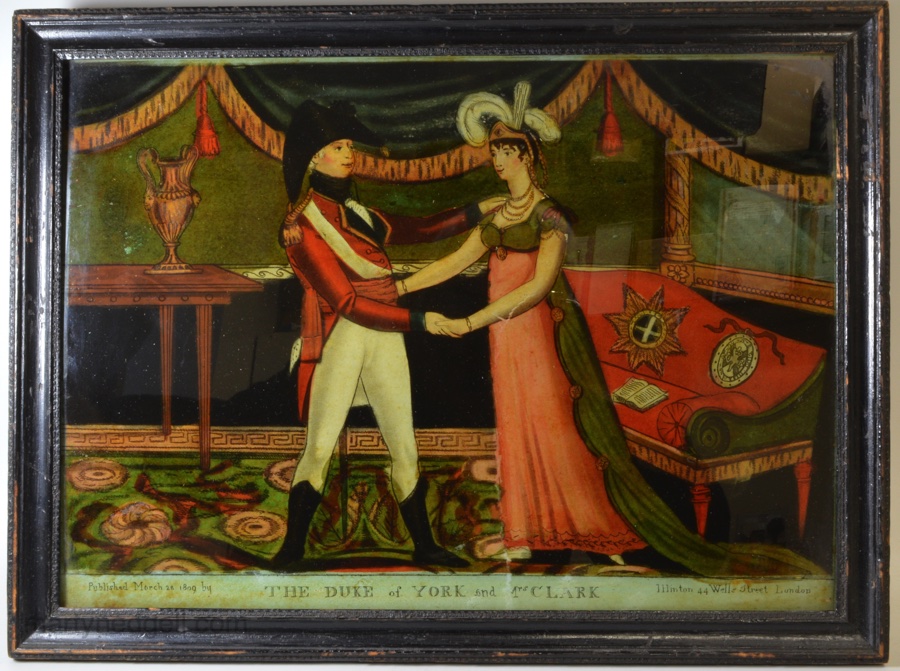Mary Anne Thompson was born on 3 April 1776 in London, the daughter of a humble tradesman. Attractive and intelligent, she was married before the age of 18, to a man named Clarke, who worked as a stonemason. However, shortly after the marriage, her husband went bankrupt, and Mary Anne Clarke left him because of this. By 1803 Clarke had been established long enough in the world of courtesans to receive the attention of Frederick, Duke of York, then the Commander in Chief of the army. Taking her as his mistress, he set her up in a fashionable residence. However, he failed to supply the funds necessary to support their lavish lifestyle. In 1809, a national scandal arose when Clarke testified before the House of Commons that she had sold army commissions with the Duke of York’s knowledge. The scandal was the subject of much humour and mockery, especially by caricaturists such as Isaac Cruikshank who created multiple graphics making fun of the scandal. Cruikshank combined mockery of the scandal while also satirising Napoleon, portraying him and his generals reading four of his caricatures of the Prince Frederick, Duke of York and Albany and Mary. Frederick was forced to resign from his position, though he was later reinstated. After the Duke of York resigned his post as Commander in Chief of the Army, and before he was later reinstated, he cut all ties to Clarke, paying her a considerable sum to prevent her from publishing letters he had written to her during their relationship. When the scandal forced Clarke to leave London, she took a tenancy of Loughton Lodge, Loughton, Essex. This house still exists, and a blue plaque to Mary Anne Clarke was unveiled on it in April 2009. There are in fact two blue plaques, one on the front, and a duplicate on the back elevation. Clarke was prosecuted for libel in 1813 and imprisoned for nine months. On her release from prison, she went to live in France. She died in Boulogne-sur-Mer on 21 June 1852.
Original stained softwood frame, overall dimensions: 15 ¾” by 11 ¾”
In good condition



